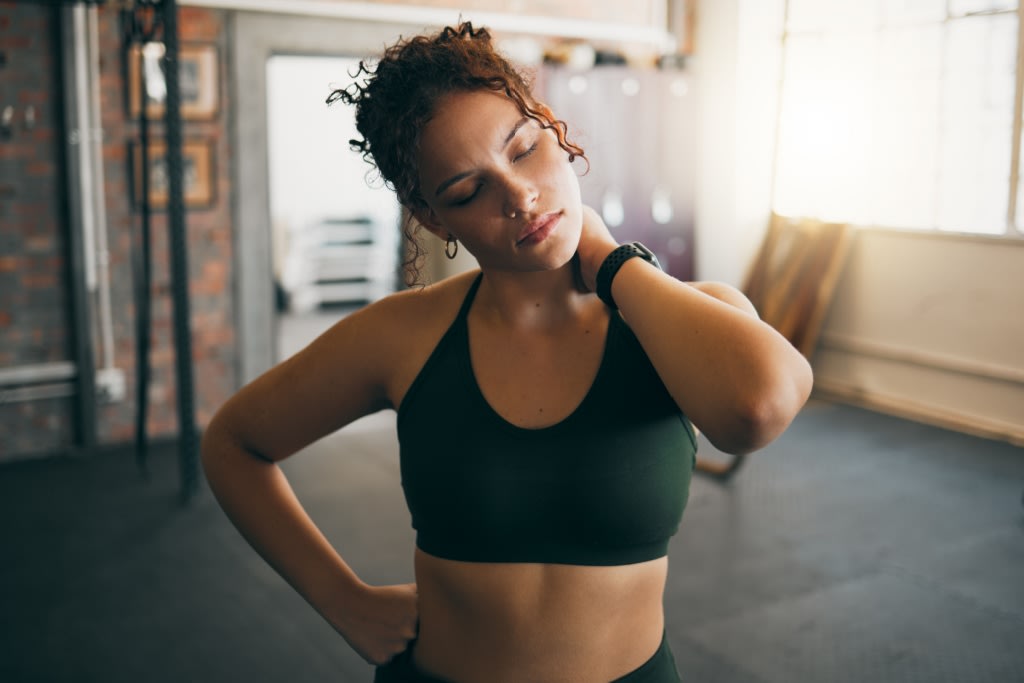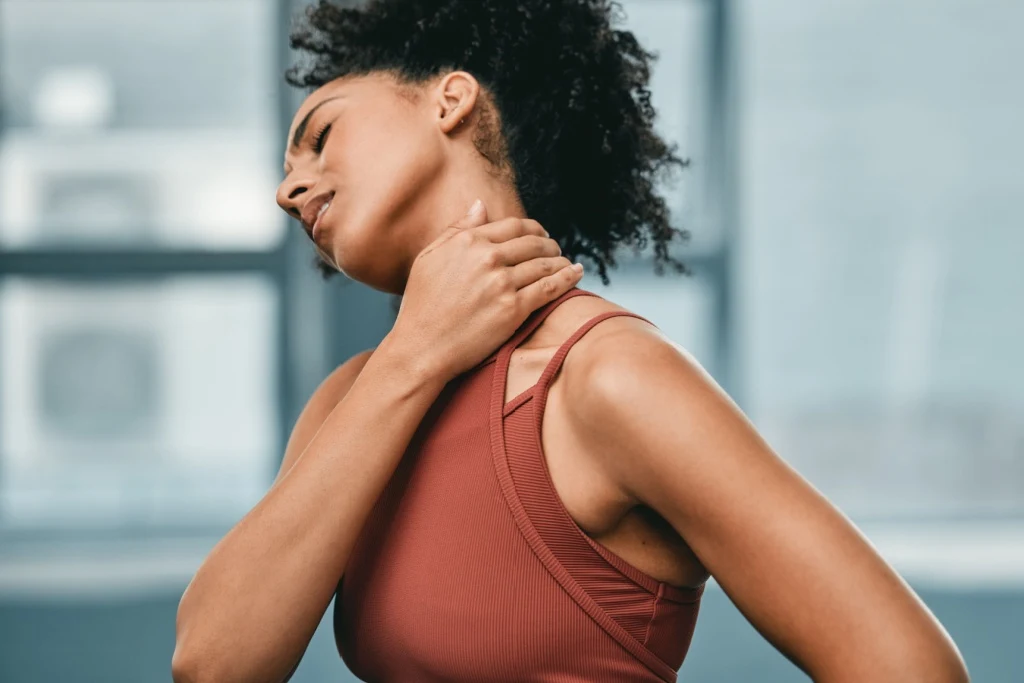Working Out While Sore: When To Push & When To Pause
Know whether to push through, take a rest day, or switch it up for smarter recovery and better results.

September 23, 2022 - Updated September 22, 2025

We’ve all had those days after a tough workout when we’re laughing with friends about our sore muscles and how we’re struggling to sit down or take the stairs, but are those aches a sign to rest or can you push through and train again? Here’s what you need to know.
What causes muscle soreness?
When you challenge your muscles with strength training or a hard workout, you can cause tiny microtears in your muscles from stressing the fibres beyond what they are used to. It often happens when you’re starting out, lifting heavier weights or trying a new exercise that uses different muscles.
These microtears are a completely normal physiological response that are essential for your body to adapt and rebuild, but they can cause post-workout aches (aka DOMS or delayed onset muscle soreness).
So, should you work out when sore or rest?
This all depends on what kind of pain you’re experiencing and how long it’s lasting.
The ‘no pain, no gain’ mentality isn’t always healthy, and you should definitely rest when:
The muscle soreness you’re experiencing after a workout is so severe that it’s affecting your range of motion and ability to perform exercises with good form as this can lead to injury or poor movement habits.
You’re really struggling with daily movements.
Your aches are also accompanied by fatigue. You don’t want to risk overtraining, burnout or stress injuries, so listen to your body’s signals.
You haven’t taken a rest day all week (or longer). Weekly rest days aren’t lazy, they’re restorative and essential - so don’t skip ‘em.
If the pain isn’t improving after three days or is really intense to the point that you think it might be a sprain, strain or other injury, don’t just rest - see your healthcare provider for advice. Apart from sharp pain, other telltale signs of injury may include swelling, bruising, tingling or numbness.
Generally, it’s ok to work out again if:
The aches are only mild, they improve as you get moving and they aren’t messing with your form or daily movement patterns. Just keep it lighter than usual knowing your body is still recovering from your previous session.
The aches have eased significantly (or completely) after your warm-up.
You’ve still got plenty of energy to train.
You’re training a completely different muscle group to what’s sore. Many Sweat programs are designed with your
muscle recovery in mind and alternate focus muscle groups in workouts to help you maximise your training.
You have weekly rest days.

What can you do to reduce soreness and boost recovery?
To reduce the severity of muscle aches and how long they last, here are some tips:
Warm up: 5-10 minutes of light cardio or dynamic stretches will help increase blood flow and prepare your body for the movement to come
Cool down: Gradually let your body come back to a resting state with 5-10 minutes of walking, cycling, stretching or foam-rolling.
Rest: Prioritise your rest days and get enough quality sleep
Eat plenty of protein: This will support your muscle growth and repair. Try to eat a good source of protein at every meal as your body can only absorb so much at a time.
Keep moving: Even on more restful days, try to move your body often to increase blood flow and prevent stiffness.
Listen to your body: If you’re starting a new program or coming back from a break, start gently and pay attention to your body’s signals. Gradually increasing the intensity and frequency (aka progressive overload) can help your body adjust and reduce intense soreness.
Don’t give up: Know that the aches will decrease as your routine becomes more consistent - they aren’t a reason to ditch your workout routine. You’ve got this.
Alternative ways to keep moving
If you want to keep moving but don’t feel up to full workout, low-intensity steady state cardio and mobility sessions both make great options to support your recovery by promoting blood flow to your muscles. Other ways to have an active recovery session instead of a workout include:
Choosing a guided recovery session from your Sweat program
Rolling out your yoga mat for a gentle flow.
If you’re new to working out or are trying a new training style - be patient and kind to yourself. Know that the aches won’t always be this intense once your body adjusts to your routine, and you’ll better understand what your body needs with every workout.
If your muscles aren’t sore, does that mean you didn’t work hard?
Nope! A lack of muscle aches doesn’t necessarily say anything about the difficulty of your workout. With regular training, your body adapts and your muscles become stronger and more resilient, meaning those tears won’t happen as easily as they did in your first few weeks of training, even if your workouts still feel challenging.
Having sore muscles is not a box you need to tick to feel like you had an effective workout or a sign that you are making progress, and you shouldn’t feel like every workout needs to be super tough. You can definitely make steady, sustainable progress without being in pain all the time.
Having sore muscles can be a satisfying feeling, but it can be hard to know whether to push ahead with your next workout or rest. Listen to your body, slow down when you need more recovery, and know the difference between workout aches and pain that could be an injury.

Erin is a writer and editor at Sweat with years of experience in women's publishing, the fitness industry, media and tech. She's passionate about the power of movement, and you can often find her on a yoga mat, a hike, a dance floor, in the ocean or the gym.
* Disclaimer: This blog post is not intended to replace the advice of a medical professional. The above information should not be used to diagnose, treat, or prevent any disease or medical condition. Please consult your doctor before making any changes to your diet, sleep methods, daily activity, or fitness routine. Sweat assumes no responsibility for any personal injury or damage sustained by any recommendations, opinions, or advice given in this article.
Fitness